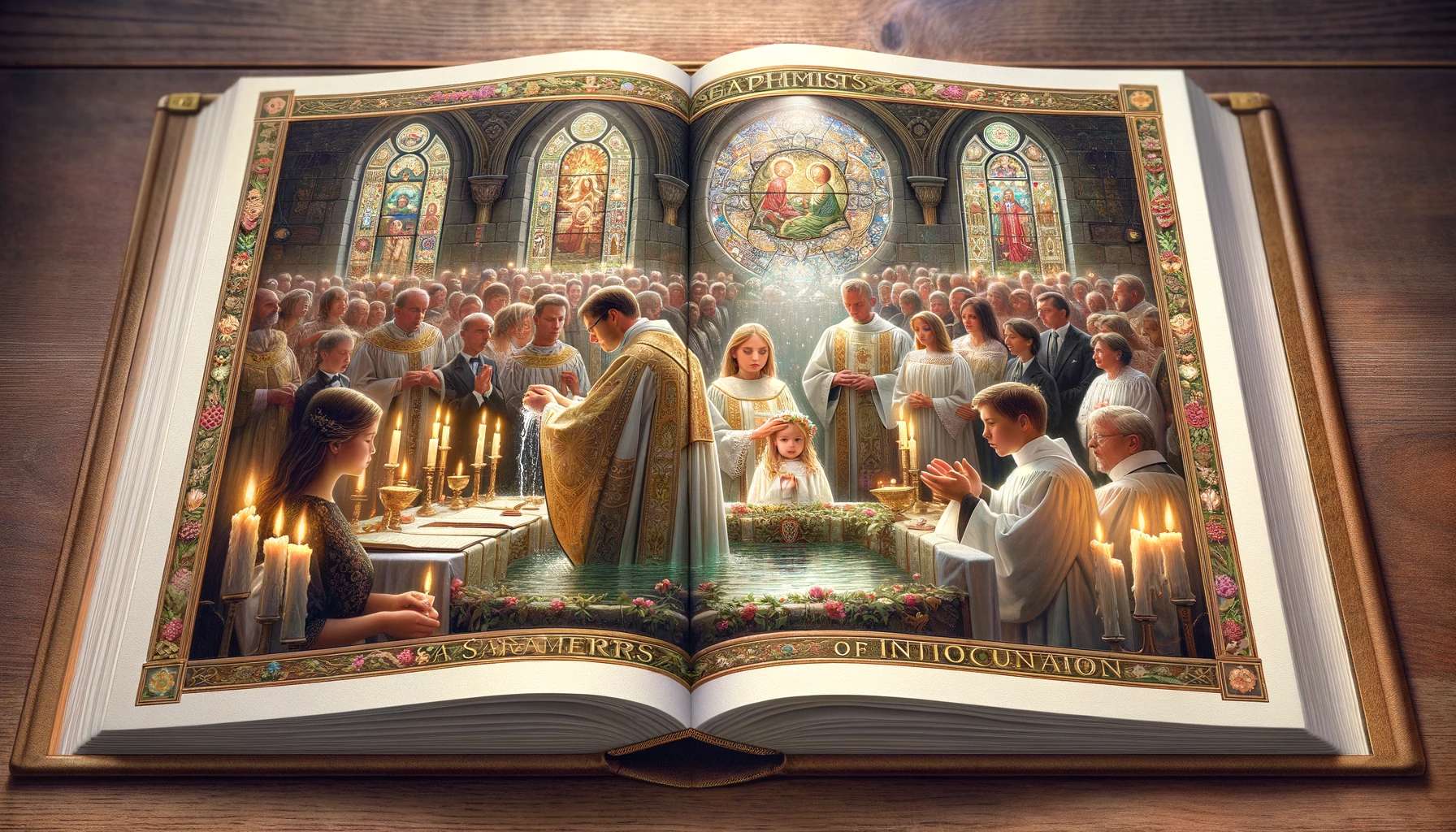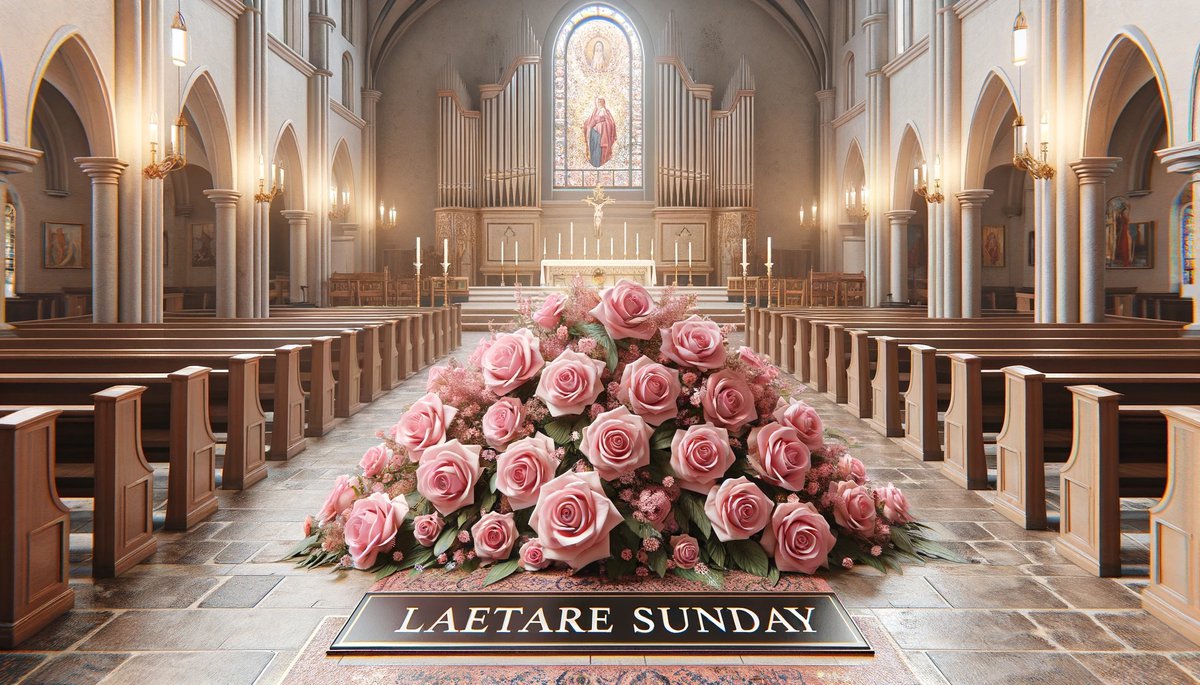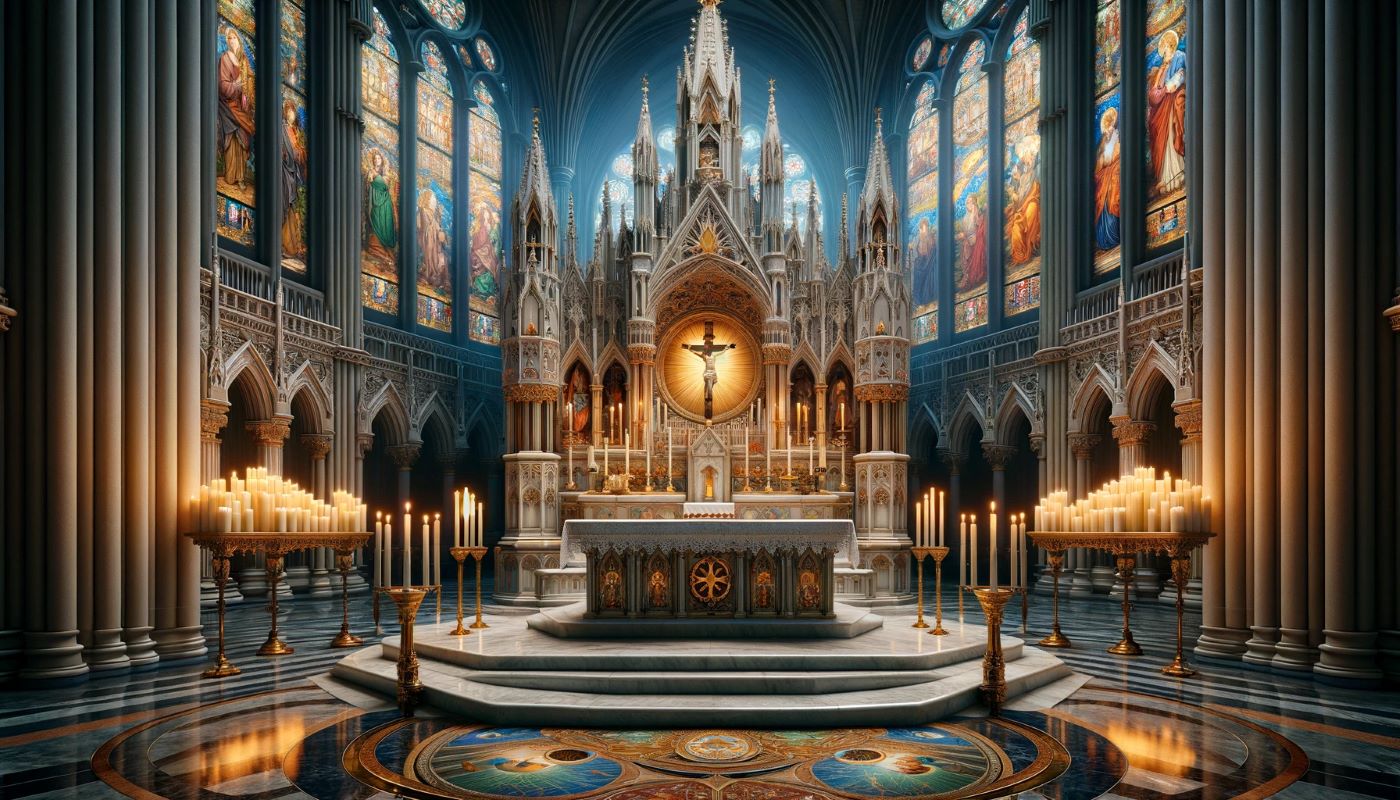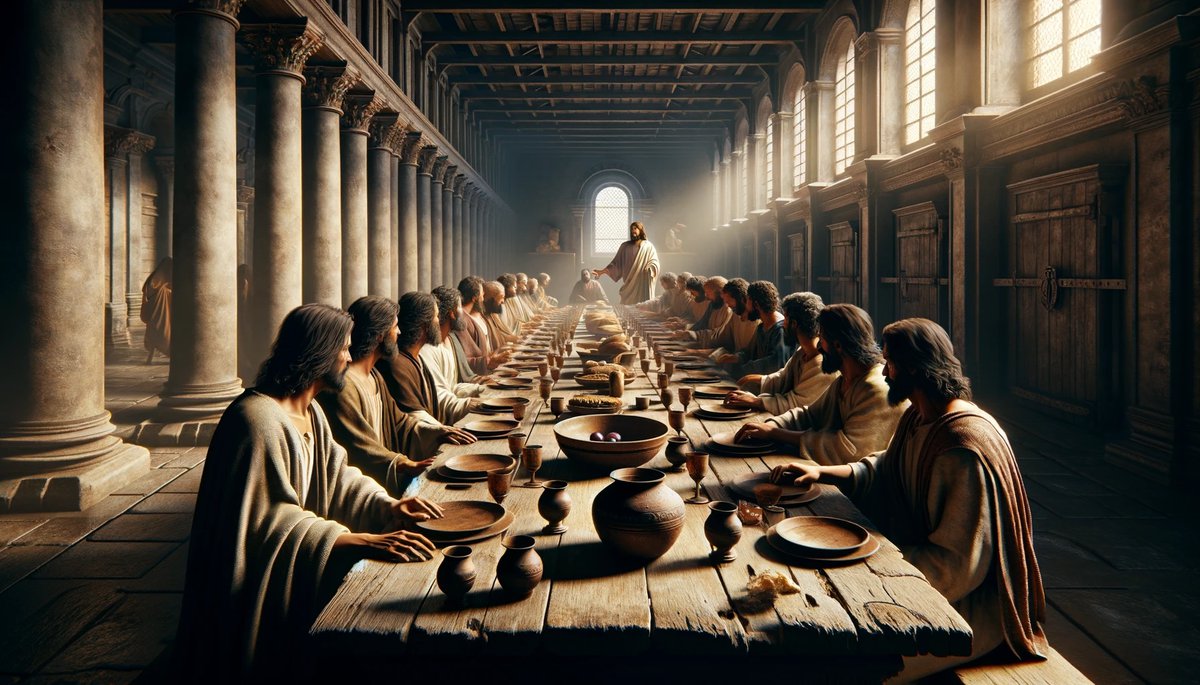Home>Theology and Spirituality>What Is The Baptism Pool Called


Theology and Spirituality
What Is The Baptism Pool Called
Published: February 29, 2024
Jason DeRose, Managing Editor at Christian.net, uses his expertise in religion and journalism to deepen understanding of faith's societal impacts. His editorial leadership, coupled with a strong academic background, enriches the platform’s diverse content, earning him recognition in both journalism and religious circles.
Discover the significance of the baptism pool, also known as the baptistery, in theology and spirituality. Explore its role in religious ceremonies and traditions.
(Many of the links in this article redirect to a specific reviewed product. Your purchase of these products through affiliate links helps to generate commission for Christian.net, at no extra cost. Learn more)
Table of Contents
Introduction
What is the baptism pool called? This is a common question among those who are curious about the religious practice of baptism. The baptism pool, also known as the baptismal pool or baptismal font, holds great significance in various religious traditions. It serves as the sacred vessel for the ritual of baptism, a symbolic act of purification and initiation into the faith. In this article, we will explore the significance of baptism, the different names for the baptism pool, historical and cultural variations, as well as modern practices and innovations related to this sacred element of religious ceremonies.
Read more: How To Build A Baptism Pool
The Significance of Baptism
Baptism holds profound significance in many religious traditions. It is a sacred rite that symbolizes purification, initiation, and the reception of divine grace. Here are some key points that highlight the significance of baptism:
-
Spiritual Cleansing: Baptism is often seen as a symbolic cleansing of the soul from sin and a spiritual rebirth into a new life of faith. It represents the washing away of past transgressions and the beginning of a fresh, spiritually renewed existence.
-
Initiation into the Faith: For individuals being baptized, it marks their formal entry into the community of believers. It signifies their acceptance of the teachings and principles of their faith, as well as their commitment to living according to its precepts.
-
Reception of Divine Grace: Many religious traditions believe that baptism is a conduit for the reception of divine grace. It is viewed as a sacramental act through which the individual receives blessings and spiritual empowerment from the divine.
-
Symbol of Unity: In some faiths, baptism serves as a unifying symbol, bringing together individuals from diverse backgrounds into a shared spiritual identity and community.
-
Public Declaration of Faith: Baptism is often a public declaration of an individual's faith and commitment to their religious beliefs. It is a visible testimony to their dedication to their spiritual journey.
-
Rite of Passage: In many cultures, baptism is considered a significant rite of passage, marking the transition from one stage of life to another. It is a momentous occasion that is often celebrated within the religious community.
Baptism is a deeply meaningful and symbolic ritual that holds a central place in the religious lives of many people around the world. Its significance extends beyond the act itself, encompassing spiritual, communal, and personal dimensions that resonate deeply with believers.
Different Names for the Baptism Pool
-
Baptismal Pool: The term "baptismal pool" is commonly used in Christian denominations, particularly those that practice full immersion baptism. It refers to the pool or body of water in which the baptismal rite takes place. The use of the word "pool" emphasizes the significance of water as a symbol of spiritual cleansing and rebirth.
-
Baptismal Font: In some Christian traditions, the baptismal pool is referred to as the "baptismal font." This term is often associated with churches that perform baptism by affusion or aspersion, where water is poured or sprinkled over the individual's head. The baptismal font may vary in design, ranging from simple basins to intricately crafted structures.
-
Mikveh: In Judaism, the ritual bath used for immersion is known as a "mikveh." While the mikveh serves various purification purposes in Jewish tradition, it is also used for the ritual immersion of converts and, in some cases, for spiritual renewal. The concept of immersion in the mikveh aligns with the symbolic cleansing and rebirth associated with baptism in other faiths.
-
Sarovar: In Sikhism, the baptismal pool is referred to as a "sarovar," which translates to "holy pool." The sarovar holds great significance in the Sikh tradition, particularly in the context of the Amrit Sanskar, the Sikh initiation ceremony. It symbolizes spiritual purity and the union of the individual with the divine.
-
Kund: In Hinduism, the baptismal pool is known as a "kund," which is a sacred reservoir or tank used for ritual bathing and purification. The kund plays a central role in various Hindu ceremonies, including the performance of sacraments and the observance of religious festivals.
-
Ghusl: In Islam, the ritual of purification through full-body washing, known as "ghusl," serves a similar function to baptism in other faiths. While ghusl is not specifically designated as a baptismal rite, it represents a form of spiritual purification and renewal, aligning with the symbolic essence of baptism.
The diverse names for the baptism pool across different religious traditions reflect the rich tapestry of beliefs and practices associated with this sacred element. Each name carries its own cultural and theological significance, underscoring the universal themes of spiritual cleansing, initiation, and rebirth that permeate religious rituals around the world.
Historical and Cultural Variations
-
Early Christian Practices: In the early Christian era, baptism was often performed in natural bodies of water such as rivers, streams, or pools. This practice harkened back to the baptism of Jesus in the River Jordan and symbolized a spiritual connection to his act of purification. As Christianity spread to regions with limited access to natural water sources, purpose-built baptismal pools within churches and cathedrals became more prevalent.
-
Medieval Europe: During the medieval period, baptismal fonts in Europe were often elaborately designed and adorned with religious iconography. These fonts served as focal points within churches, reflecting the importance of baptism in the lives of believers. The designs of baptismal fonts varied across different regions, showcasing the influence of local artistic and cultural traditions.
-
Jewish Mikveh Traditions: The use of the mikveh in Judaism dates back to ancient times and continues to be an integral part of Jewish ritual practice. The mikveh is used for various purification rites, including those related to menstruation, childbirth, and conversion. The historical significance of the mikveh as a place of spiritual cleansing and renewal aligns with the symbolic essence of baptism in Christianity.
-
Sikh Amrit Sanskar: In Sikhism, the sarovar holds deep historical and cultural significance, particularly in the context of the Amrit Sanskar, or Sikh initiation ceremony. The construction of the Amrit Sarovar (Pool of Nectar) at the Harmandir Sahib (Golden Temple) in Amritsar, India, exemplifies the central role of the sarovar in Sikh religious and cultural heritage.
-
Hindu Ritual Baths: The concept of ritual bathing and purification in Hinduism is deeply rooted in historical and cultural traditions. The kund, or sacred reservoir, is a common feature in Hindu temples and pilgrimage sites, where devotees engage in ceremonial bathing as part of religious observances. The historical significance of the kund as a site of spiritual purification resonates with the symbolic essence of baptism in other faiths.
-
Islamic Purification Rites: The practice of ghusl, or full-body washing, holds historical and cultural significance in Islam. While ghusl is primarily associated with purification from ritual impurity, its historical roots and cultural variations reflect the broader themes of spiritual cleansing and renewal found in the practice of baptism in other religious traditions.
The historical and cultural variations in the practices and symbolism of baptismal pools across different religious traditions underscore the rich tapestry of human spiritual expression and the enduring significance of rituals related to purification, initiation, and rebirth.
Modern Practices and Innovations
-
Architectural Integration: In contemporary religious architecture, baptismal pools are often integrated into the design of worship spaces in innovative ways. Architects and designers seek to create baptismal pools that harmonize with the overall aesthetic and symbolism of the sacred space, blending tradition with modern sensibilities. This integration may involve the use of natural materials, creative lighting, and sculptural elements to enhance the spiritual experience of the baptismal rite.
-
Technological Advancements: Modern advancements in materials and construction techniques have influenced the design and functionality of baptismal pools. From state-of-the-art filtration systems to adjustable water levels, technological innovations have enhanced the safety, efficiency, and environmental sustainability of baptismal pools. These advancements ensure that the baptismal experience is not only spiritually meaningful but also practical and environmentally conscious.
-
Inclusive Design: Contemporary religious communities are increasingly embracing inclusive design principles in the creation of baptismal pools. This involves ensuring that baptismal pools are accessible to individuals of all ages and physical abilities, accommodating diverse baptismal practices and rituals. Inclusive design promotes the participation of every member of the faith community in the sacred act of baptism, fostering a sense of belonging and unity.
-
Ecological Considerations: In response to growing environmental awareness, many religious institutions are incorporating ecological considerations into the design and maintenance of baptismal pools. This may involve utilizing sustainable water sources, implementing water conservation measures, and integrating natural elements such as plants and landscaping to create environmentally friendly baptismal settings. By aligning the design of baptismal pools with ecological principles, religious communities demonstrate their commitment to stewardship of the natural world.
-
Multifaith Adaptations: In interfaith and ecumenical contexts, there is a growing emphasis on creating adaptable baptismal pools that can accommodate diverse religious traditions and practices. These multipurpose baptismal pools are designed to facilitate various modes of baptism, such as immersion, affusion, and aspersion, reflecting the inclusive and accommodating nature of interfaith dialogue and cooperation. Such adaptations promote understanding and respect for different religious rites while fostering unity and collaboration among diverse faith communities.
-
Artistic Expressions: Contemporary artists and craftsmen are contributing to the evolution of baptismal pool design through their creative expressions. From contemporary sculptures and installations to multimedia presentations, artistic interpretations of baptismal pools enrich the visual and sensory dimensions of the baptismal experience. These artistic expressions serve to deepen the spiritual impact of baptism and create memorable, transformative encounters for the individuals undergoing the ritual.
-
Educational Integration: Some modern baptismal pools are designed to serve as educational tools, incorporating interactive elements and informational displays that convey the significance and symbolism of baptism to participants and observers. By integrating educational components into the design of baptismal pools, religious communities aim to enhance the understanding and appreciation of the ritual, fostering a deeper connection to the spiritual dimensions of baptism.
Incorporating these modern practices and innovations into the design and use of baptismal pools reflects the dynamic nature of religious traditions and their ongoing relevance in contemporary society. By embracing creativity, inclusivity, sustainability, and technological advancements, religious communities continue to enrich the sacred experience of baptism for present and future generations.















